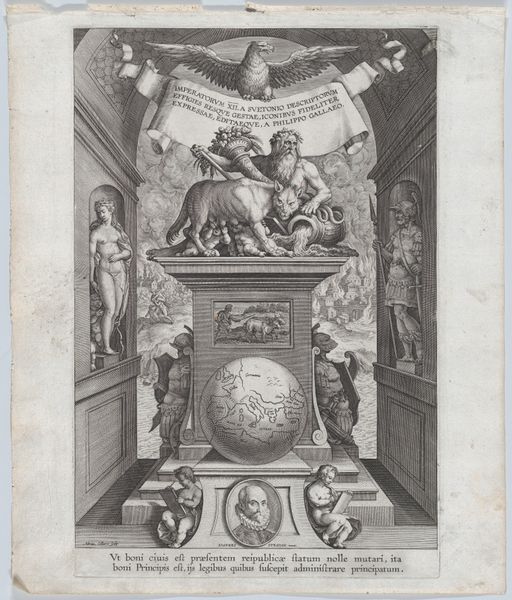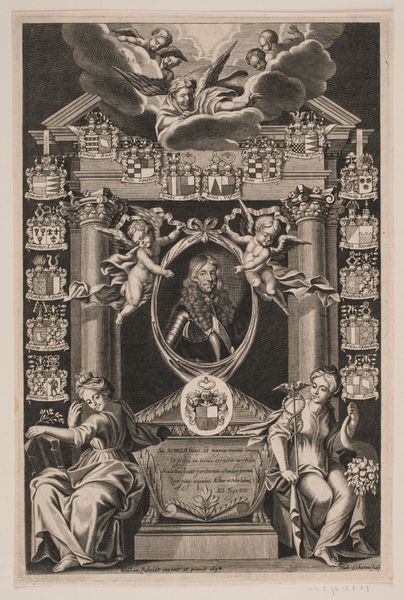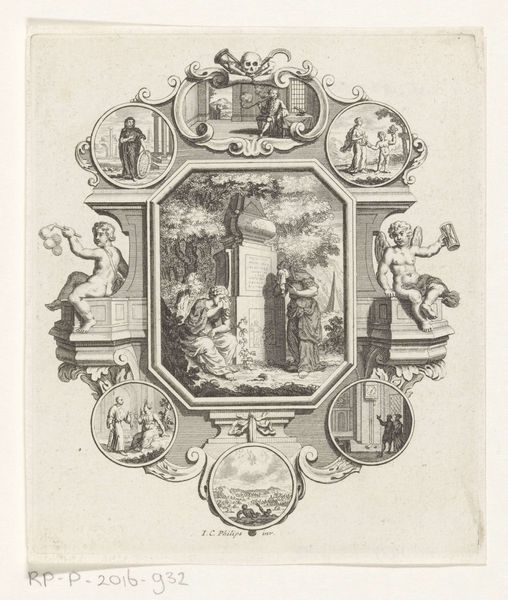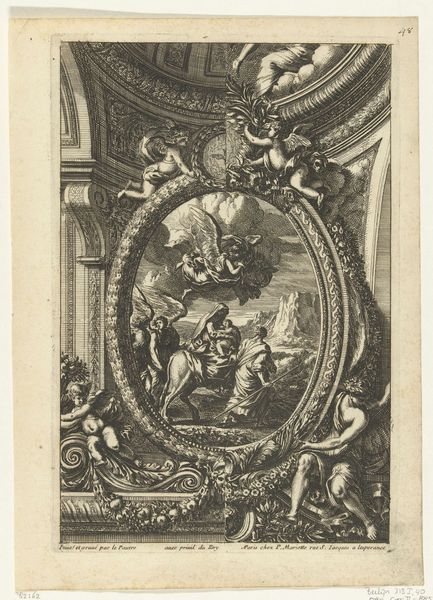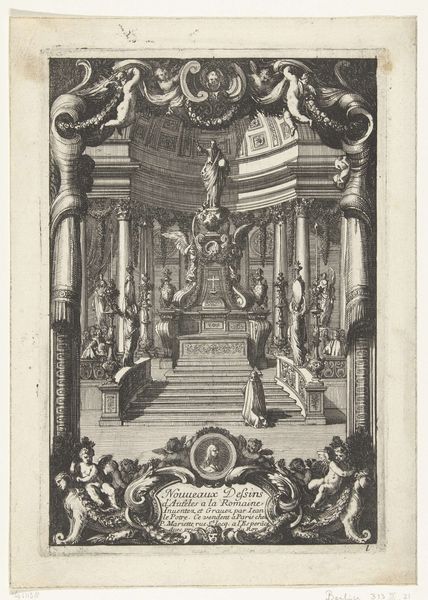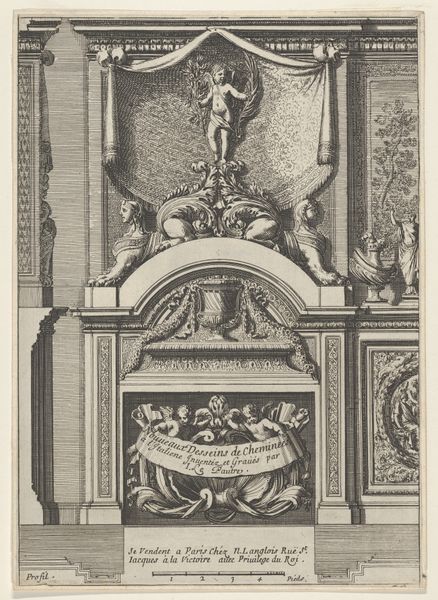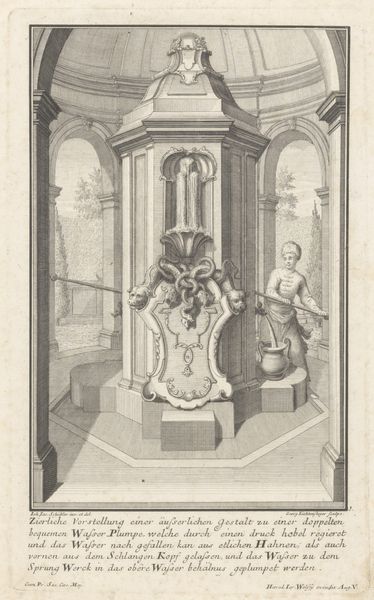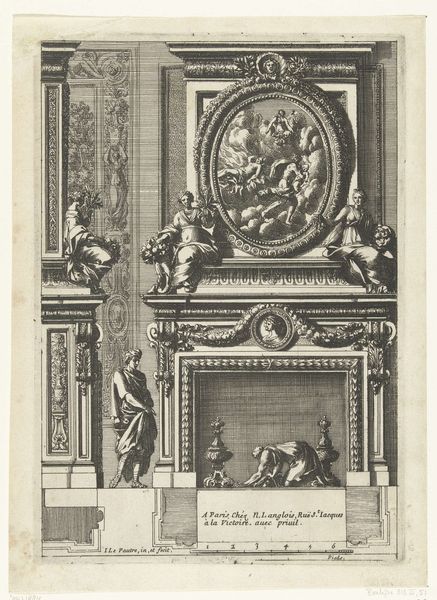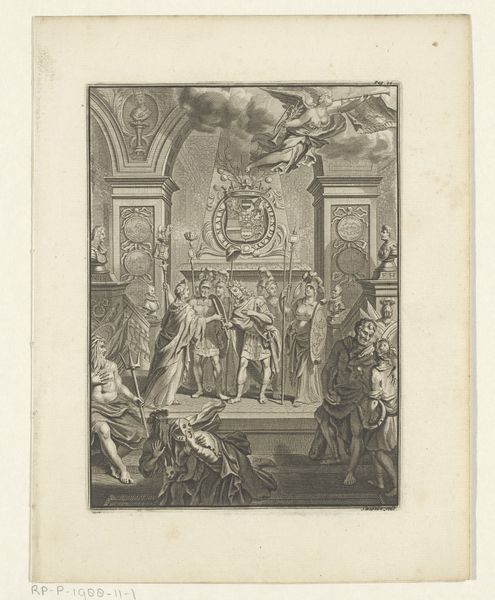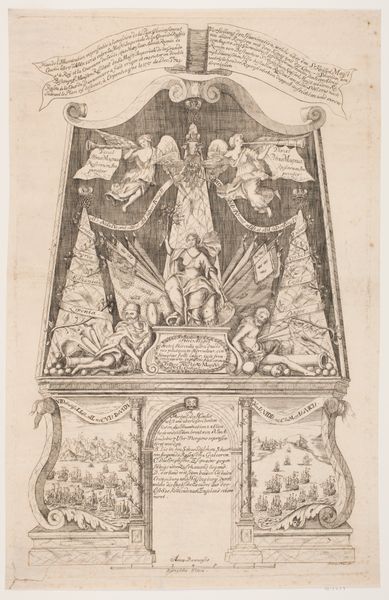
print, engraving
#
baroque
# print
#
figuration
#
history-painting
#
engraving
Dimensions: height 172 mm, width 128 mm
Copyright: Rijks Museum: Open Domain
Editor: Here we have "Figures Kneeling Before a Madonna Image," a print from 1724 by Jan Goeree. The detail is incredible given the medium! It's quite busy, with so many figures and decorative elements, what jumps out to you as you look at this piece? Curator: What interests me most is understanding the materials used in its production and how that dictated its function. It is an engraving, a mass-reproducible image. Its Baroque style suggests it was responding to specific social and religious currents, possibly as propaganda? Look at how the composition uses classical figures as supports: consider how it blurs the line between fine art and applied art through its materiality. Editor: Propaganda, that's fascinating. So, the choice of engraving—a more accessible medium—implies a wider intended audience than, say, an oil painting? Curator: Precisely. The choice of the print medium, readily and cheaply produced, suggests widespread distribution. The material reality here is the capability to create multiple copies meant that the message was reaching numerous people within a certain socio-economic class. Who could afford or had access to these? How would its meaning differ based on the location? Editor: That’s something I hadn't considered before. It changes how I perceive the kneeling figures in the image itself—they’re not just kneeling in faith but perhaps being directed by this circulated image. It makes me wonder, too, about the labor involved. Curator: Yes! Engraving required skill and time. What kind of workshop was involved? What were the economic conditions of the engravers? The print is signed in Utrecht, so it connects with the economics in this city during the early 1700’s, how did production happen there, and what are the characteristics? This artwork invites those further considerations of production and place. Editor: So much to consider! Thanks; I now look at this artwork with so many questions about the materiality of its making and the purpose behind it. Curator: Indeed. Thinking about the material process reveals new ways to connect the artwork to a bigger social picture.
Comments
No comments
Be the first to comment and join the conversation on the ultimate creative platform.
